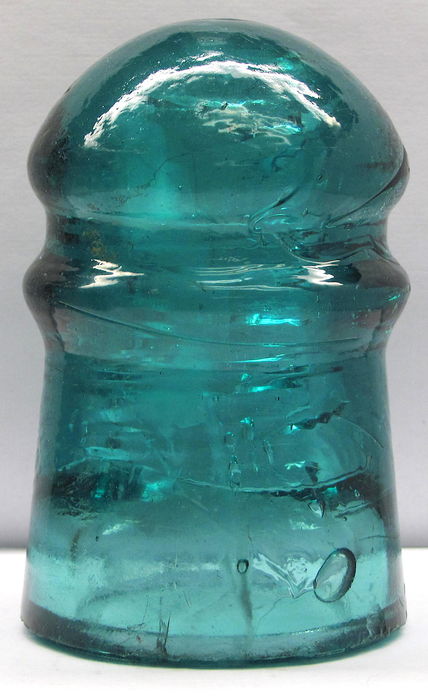CD-126 No Embossing MLOD - Brookfield Design Style? - Georgia
By Jack Kesling; posted September 27, 2020
View Original: Click to zoom, then click to magnify (1402 x 2292) 385KB

|
The following post shows the CD 126 No Embossing MLOD in beautiful milky teal blue. I suspect this might also be a Brookfield mold design style. [id=81448020] [id=81448296] If any of you have these in your collection, could you please document to ICON. I also know that the CD 126 Western Union style comes with a large "7" on it - typical of King City Glass works [id=272503762]. Those of you that have this insulator or any other CD 126 embossings not generally known are urged to post good pictures to the ICON reference section. Any comments are most welcome. As a follow up comment, there was a question about if the CD 126 Western Union style with a "7" actually exists. I did a quick search of ICON and would like to add the following reference for your consideration. This is another post from Steven Kelly demonstrating that he has one in his collection. [id=272503762] Gene Hawkins made the following comment: I looked at the "7" seen at: [id=272503762] and the "7" looks like a typical Brookfield serif style font & dome location, not the chiseled prismic "7s" (and bars) found on the skirts of No Name CD 106s & 151s we have. With "mold paste" filling in the small embossing of dome embossed Brookfields, my opinion is it's likely Brookfield (Bushwick) made. I received another follow up comment in an e-Mail from Mark Lauckner in Canada. His comment is as follows: "The no-embossing on the left [id=605794765] with the wider wire groove is typically found in the maritimes in Canada (i.e. New Brunswick, Nova Scotia, and one out of Sask). I know of one collector who has around a dozen, mostly in this blue range and also in the light greens. I had a rich blue (sold to Jim McLeod in Calgary 2012), and I still have a nice light green." The link to Mark's picture post are: [id=306107692] [id=289084240] [id=314989839] It was of interest to learn that these CD 126 No Embossing MLOD are mostly found in Canada. The one I found was on the Central of Georgia Railway Western Union telegraph line that ran South a few mile from Fort Valley, Georgia. Over the period between 1968 to 1972 I've found a number of insulators that seem to be out of place in Georgia. I suspect that it might have been used as a replacement insulator as it was one of a kind. Does anyone have a speculation or thought on what company / glass house might have made this insulator? All comment are most welcome. |